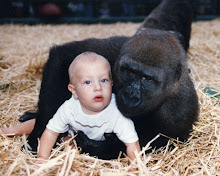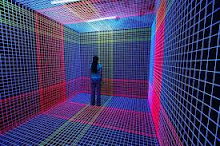First, Dr Shoukhrat Mitalipov took eggs donated by healthy young women and removed their DNA. He then placed skin cells inside the hollowed-out eggs and used a zap of electricity to make them start developing into embryos. When the embryos were five or six days old, and around the size of a pinhead, Dr Mitalipov successfully harvested them for stem cells.These cells, known as ‘master cells’, are capable of turning into every type of cell in the body and are widely seen as a potential repair kit for diseased, damaged and worn-out body parts.
 Dr Mitalipov has spent many years refining the technique, which involves feeding the eggs caffeine at a key point in the process. He said: ‘Our finding offers new ways of generating stem cells for patients with dysfunctional or damaged tissues and organs.‘Such stem cells can regenerate and replace those damaged cells and tissues and alleviate diseases that affect millions of people. ‘While there is much work to be done in developing safe and effective stem-cell treatments, we believe this is a significant step forward in developing the cells that could be used in regenerative medicine.’
Dr Mitalipov has spent many years refining the technique, which involves feeding the eggs caffeine at a key point in the process. He said: ‘Our finding offers new ways of generating stem cells for patients with dysfunctional or damaged tissues and organs.‘Such stem cells can regenerate and replace those damaged cells and tissues and alleviate diseases that affect millions of people. ‘While there is much work to be done in developing safe and effective stem-cell treatments, we believe this is a significant step forward in developing the cells that could be used in regenerative medicine.’ The same technique was employed by researchers led by Dr Ian Wilmut at the Roslin Institute in Edinburgh to produce Dolly the Sheep, pictured above with Dr Wilmut, the first mammal to be cloned from an adult cell. During somatic cell nuclear transfer (SCNT), a donor cell nucleus is transferred to an egg cell whose own nuclear DNA has been removed. The egg develops into an early-stage embryo that is a clone of the donor, containing the same genes. Stem cells taken from the embryo are 'pluripotent', having the ability - with the right coaxing - to mature into any kind of tissue in the body, from brain to bone. In the new study, reported in the journal Cell, scientists transferred nuclei from human skin cells into human egg cells.In Britain, the law states that cloned embryos have to destroyed after 14 days, and it is illegal to implant them in a woman. Other countries have more relaxed rules for so-called reproductive cloning.
The same technique was employed by researchers led by Dr Ian Wilmut at the Roslin Institute in Edinburgh to produce Dolly the Sheep, pictured above with Dr Wilmut, the first mammal to be cloned from an adult cell. During somatic cell nuclear transfer (SCNT), a donor cell nucleus is transferred to an egg cell whose own nuclear DNA has been removed. The egg develops into an early-stage embryo that is a clone of the donor, containing the same genes. Stem cells taken from the embryo are 'pluripotent', having the ability - with the right coaxing - to mature into any kind of tissue in the body, from brain to bone. In the new study, reported in the journal Cell, scientists transferred nuclei from human skin cells into human egg cells.In Britain, the law states that cloned embryos have to destroyed after 14 days, and it is illegal to implant them in a woman. Other countries have more relaxed rules for so-called reproductive cloning. Josephine Quintavalle, of campaign group Comment on Reproductive Ethics, questioned the need for the research, given that another, more simple way of making customised stem cells already exists. She said: ‘The suspicion has to be that the real interest is not stem cell therapy per se, given that other uncontroversial approaches are already so successful. Let’s hope that the goal is not out and out reproductive cloning.
Josephine Quintavalle, of campaign group Comment on Reproductive Ethics, questioned the need for the research, given that another, more simple way of making customised stem cells already exists. She said: ‘The suspicion has to be that the real interest is not stem cell therapy per se, given that other uncontroversial approaches are already so successful. Let’s hope that the goal is not out and out reproductive cloning.  ’Dr Mitalipov said he has failed to create baby monkeys via cloning, and that it is therefore unlikely his technique could be used to clone humans. Others claim that creating a five-day-old bundle of cells is a far cry from someone giving birth to a fully-formed cloned baby. However, Dr King warned: ‘Scientists have finally delivered the baby that would-be human cloners have been waiting for a method for reliably creating cloned human embryos. 'This makes it imperative that we create an international ban on human cloning before any more research like this takes place. ‘It is irresponsible in the extreme to have published this research. ‘In 2004 Hwang Woo-suk of South Korea claimed to have cloned the first human embryo and extracted stem cells from it. It later emerged that his data was fabricated, and he was convicted of embezzlement and other charges.
’Dr Mitalipov said he has failed to create baby monkeys via cloning, and that it is therefore unlikely his technique could be used to clone humans. Others claim that creating a five-day-old bundle of cells is a far cry from someone giving birth to a fully-formed cloned baby. However, Dr King warned: ‘Scientists have finally delivered the baby that would-be human cloners have been waiting for a method for reliably creating cloned human embryos. 'This makes it imperative that we create an international ban on human cloning before any more research like this takes place. ‘It is irresponsible in the extreme to have published this research. ‘In 2004 Hwang Woo-suk of South Korea claimed to have cloned the first human embryo and extracted stem cells from it. It later emerged that his data was fabricated, and he was convicted of embezzlement and other charges.





